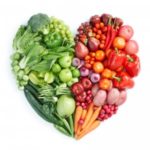7 PROVEN WAYS TO LOSE WEIGHT WITH ADRENAL FATIGUE
More on meals for weigh loss… ·∙
Each meal should include 1-‐2 potions of lean protein. ·∙
Eat all the low-‐glycemic veggies you want, at least 6 servings a day
Low Glycemic Veggies (organic):
Artichokes
Asparagus
Beans & Legumes
Broccoli
Brussels sprouts
Cauliflower
Celery
Cucumbers
Eggplants
Green Beans
Green Peppers
Lettuce
Mushrooms
Spinach
Tomatoes
Zucchini
Higher Glycemic Veggies (Try to limit):
Beets
Carrots
Celery Root
Corn
Parsnips
Peas
Red potatoes
Rutabaga
Sweet potatoes
Turnips
White potatoes
Winter squash
Yams
If you have a thyroid problem and have read/heard that cruciferous vegetables like
broccoli, kale, cabbage, rutabaga, and cauliflower are bad because they are goitergenic (ie. they will cause an enlargement)” theres no need to worry about if your organs are working! (stomach, liver, pancreas, adrenals, etc.)
That is WHY you HAVE to be HEALTHY TO LOSE WEIGHT!
Cruciferous vegetables are very high in phytonutrients! They eliminate toxins from the body by providing enzymes to help your liver!
Low Glycemic Fruits: (The best are berries and any fruit with a pit)
Apples
Apricots
Blackberries
Blueberries
Cantaloupes
Cherries
Grapefruits
Nectarines
Peaches
Plums
Raspberries
Strawberries
Higher Glycemic Fruits (Try to limit/avoid):
Bananas
Clementines
Grapes
Honeydew
Oranges
Papayas
Pineapples
Raisins
Tangerines
Watermelon
Dates, dried fruits
Juicing is a NO-‐NO when attempting to lose weight! You NEED the fiber!!!!
A small serving of good fat with each meal and snack (Coconut oil is the best!!!)
Eat 1-‐2 snacks per day if needed BUT
Don’t eat after 8pm ·∙
Drink 48-‐64 oz of water minimum each day ·∙
Have a minimum of 25 grams of fiber a day!
Good Fats:
Coconut oil
Avocados
Raw Nuts & seeds
Olives/Olive Oil
Peanuts/Oil
Peanut Butter
Almonds
Fish (omega-‐3…salmon, tuna, etc)
Flaxseed
Eat spicy foods,
drink more water,
snack on nuts and seeds,
eat a big breakfast,
eat three meals/day,
eat a lighter dinner,
eat slowly and chew thoroughly,
eliminate MSG/Modified Food Starch/Natural Flavorings.
